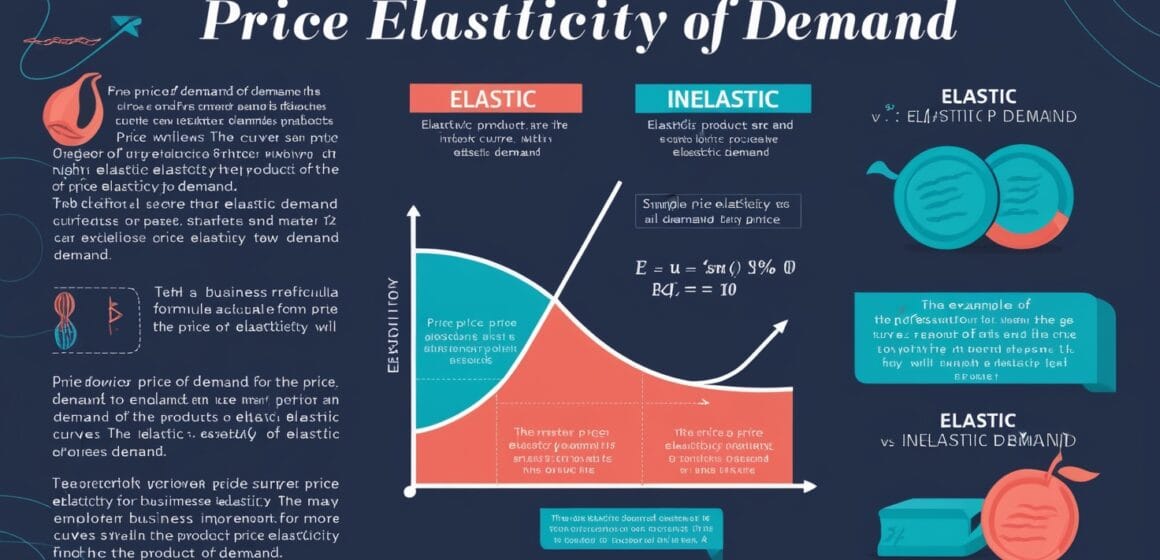Price elasticity of demand is a fundamental concept in microeconomics that every business owner should understand. It measures how sensitive consumers are to changes in the price of a product or service. Grasping this concept can help you set pricing strategies, anticipate market reactions, and maximize revenue. In this article, we’ll break down the concept of price elasticity, its types, and how it affects your business decisions.
What Is Price Elasticity of Demand?
Price elasticity of demand (PED) quantifies the responsiveness of consumer demand to changes in the price of a good or service. It is calculated using the formula:PED=% Change in Quantity Demanded% Change in PricePED = \frac{\% \text{ Change in Quantity Demanded}}{\% \text{ Change in Price}}PED=% Change in Price% Change in Quantity Demanded
- If |PED| > 1, demand is elastic (consumers are sensitive to price changes).
- If |PED| < 1, demand is inelastic (consumers are less sensitive to price changes).
- If |PED| = 1, demand is unitary elastic (proportional response to price changes).
Factors Affecting Price Elasticity
Several factors influence the price elasticity of demand for a product:
- Availability of Substitutes:
- More substitutes mean higher elasticity (e.g., soda brands).
- Few substitutes lead to inelastic demand (e.g., insulin for diabetics).
- Necessity vs. Luxury:
- Necessities (e.g., food, utilities) tend to have inelastic demand.
- Luxuries (e.g., vacations, designer goods) often have elastic demand.
- Proportion of Income Spent:
- Products that consume a larger share of income (e.g., cars, housing) are typically more elastic.
- Cheaper goods (e.g., chewing gum) are less sensitive to price changes.
- Time Horizon:
- Over time, consumers can adjust their behavior, making demand more elastic in the long run.
Types of Price Elasticity
- Elastic Demand:
- Small price changes lead to significant changes in quantity demanded.
- Example: If the price of a streaming subscription rises, many customers may cancel.
- Inelastic Demand:
- Price changes have little effect on quantity demanded.
- Example: A slight increase in gasoline prices won’t drastically reduce consumption.
- Unitary Elasticity:
- Revenue remains constant with price changes, as percentage changes in price and demand offset each other.
How Price Elasticity Impacts Your Business
1. Pricing Strategy:
- For elastic products, lowering prices can increase total revenue by attracting more buyers.
- For inelastic products, raising prices may increase revenue without significantly affecting sales volume.
2. Revenue Optimization:
- Understanding elasticity helps businesses find the optimal price point for maximizing revenue.
3. Market Segmentation:
- Businesses can use price discrimination by charging different prices to different groups based on their elasticity.
4. Cost Management:
- Elasticity analysis helps predict how cost increases (e.g., raw materials) will affect demand and profitability.
5. Competitive Advantage:
- Recognizing competitors’ price elasticity helps in formulating pricing strategies to gain market share.
Real-World Examples
- Airline Tickets:
- Highly elastic due to many substitutes and price sensitivity.
- Airlines use dynamic pricing to adjust prices based on demand.
- Pharmaceuticals:
- Inelastic due to necessity and lack of substitutes.
- Companies can charge premium prices for patented drugs.
- Fast Food:
- Relatively elastic because of numerous alternatives.
- Small price increases can lead to significant shifts in customer loyalty.
Conclusion
Price elasticity is a powerful tool for businesses to understand consumer behavior, optimize pricing strategies, and improve profitability. By analyzing your product’s elasticity, you can make informed decisions that align with market dynamics and customer preferences. Whether you’re a startup or an established brand, leveraging this economic principle can give you a competitive edge in today’s ever-changing market.




Leave a Reply